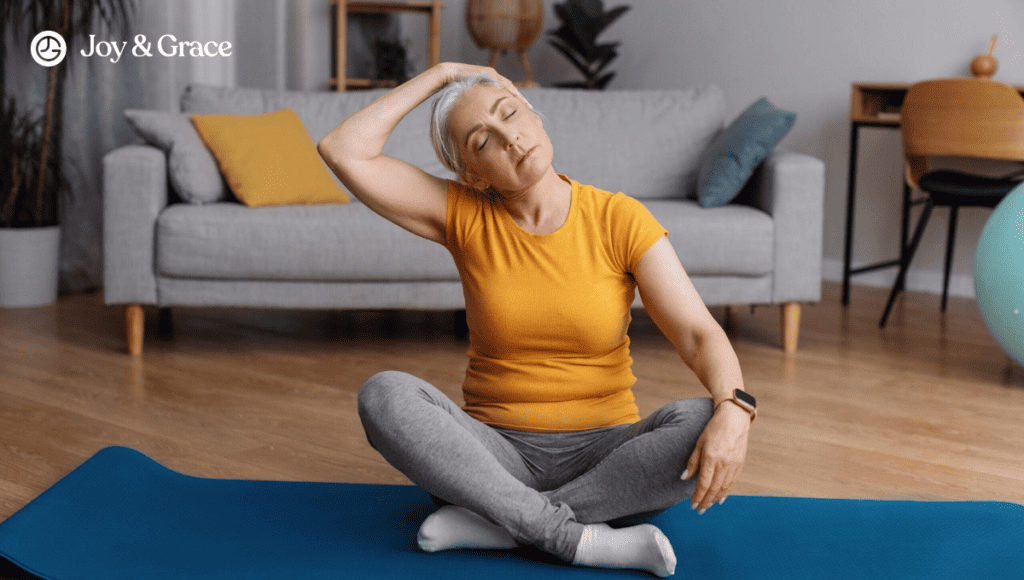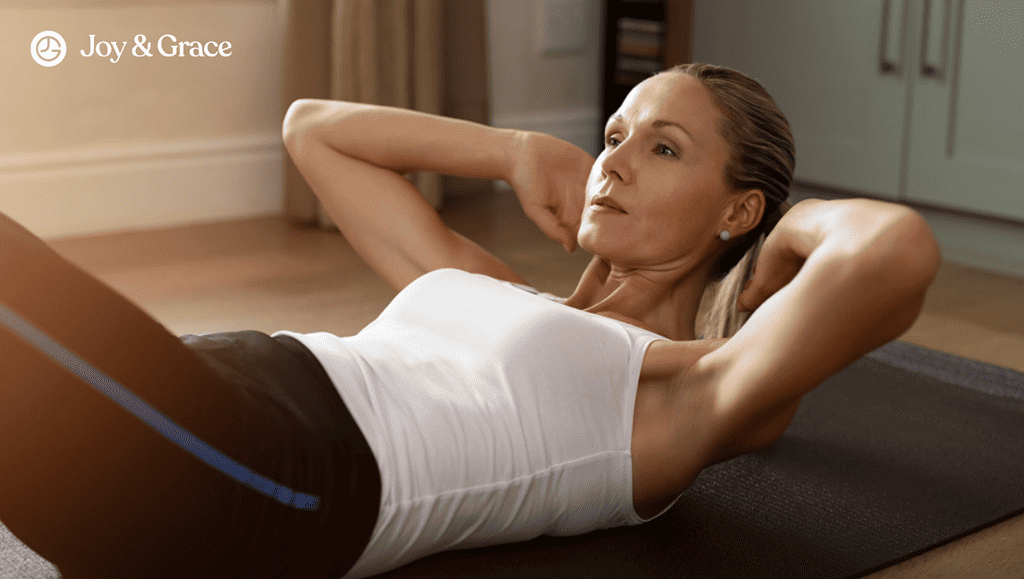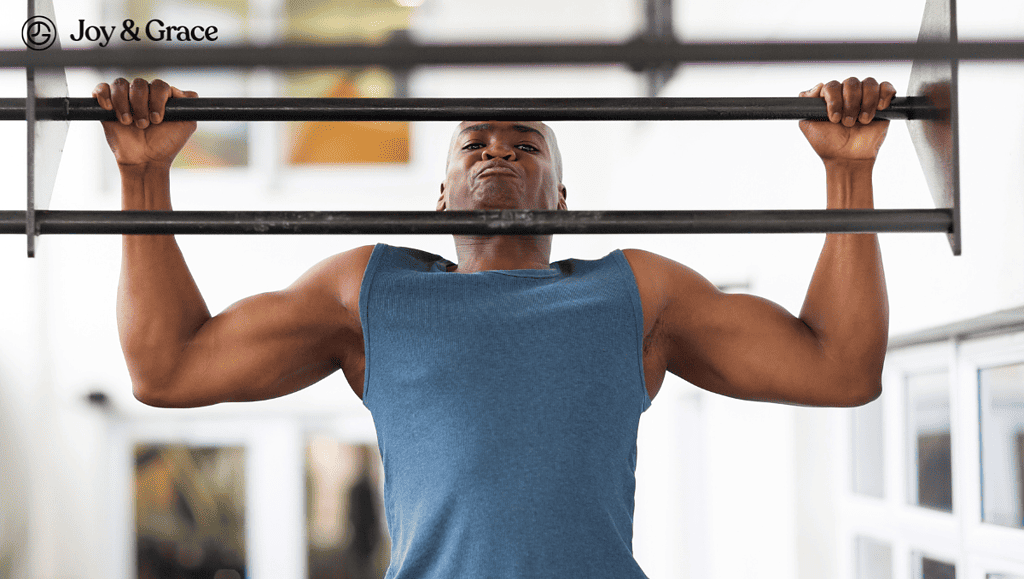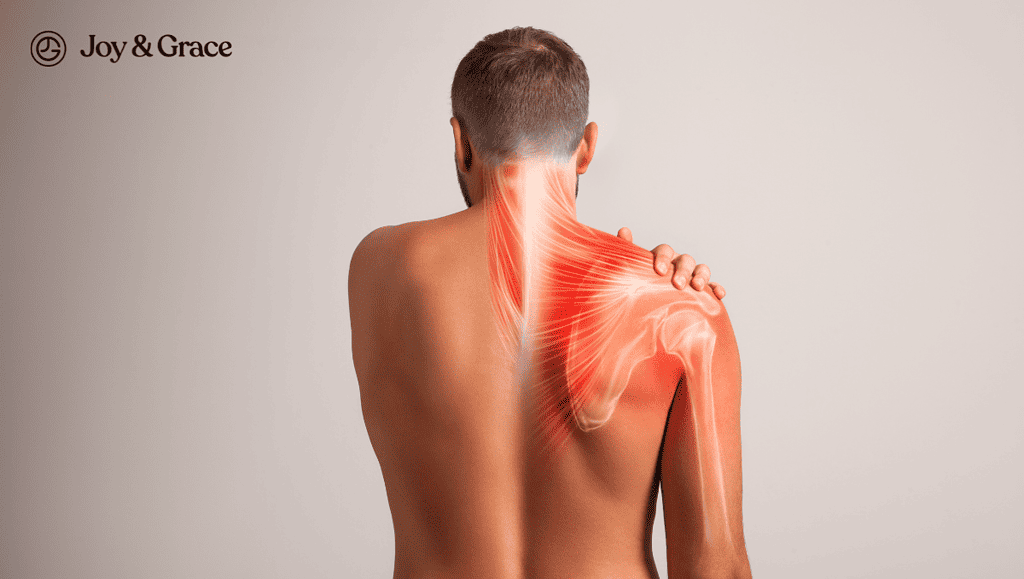Many people suffering from upper back and neck pain hesitate to move an inch, fearing their pain might get worse. The truth is that standing in one place doesn’t really help in the long term.
Exercise can be very helpful in bringing back mobility and stabilizing your joints and muscles. They are great tools that may ultimately help relieve your upper back and neck pain. Let’s get right into it and discover the best exercises for you.
What Exercise is Good for Upper Back and Neck Pain?
Dealing with upper back and neck pain can be a real struggle. Pain can significantly affect your day-to-day activities and dampen your mood.
The good news, though, is that there are exercises you can do to find relief and manage your pain. Exercises for upper back and neck pain can be:
- Stretching exercises, or
- Strengthening exercises
These can come in various types, which we’ll mention below. Before we dive into these types, let’s see if exercising is recommended in the first place.
Should I Stretch or Workout if I Have Upper Back Pain?
If you’re already wondering if you should exercise with pain, the answer is a cautious yes.
A study from 2019 shows exercising while feeling mild pain may be very beneficial toward pain relief.
However, you should also keep something important in mind. The goal of exercise is to ease your pain, not worsen it. Listen to your body. If an exercise or stretch causes more pain, it's likely best to stop doing it.
On the other hand, certain back and neck pain causes, such as a spinal injury or spinal cord compression, call for strict rest at first. Therefore, we highly encourage you to consult your doctor and/or physical therapist before beginning an exercise program.
Stretching Exercises: How Do I Stretch My Upper Back, Neck, and Shoulders?
Stretching exercises improve the elasticity and flexibility of your upper back and neck muscles. By regularly stretching your muscles, you can increase their range of motion and your control over them. F
Stretching exercises can involve so-called dynamic stretches, which actively engage your muscles. These work great for warming up your muscles before strength exercises.
Below, we list 13 easy-to-do stretches to help ease pain in your upper back, neck, and shoulders.
1. Neck Rolls
Great for stretching your neck and upper back.
- While standing or sitting, tilt your neck toward your right shoulder. You should feel a stretch on the side of your neck, where the trapezius muscle is located. The trapezius, or trap, is the largest muscle of the upper back and neck. A tight trapezius is often the culprit behind your neck and upper back pain.
- Keep your head tilted to your right for two seconds.
- Then, slowly rotate your head toward your left shoulder. Your chin should go by your chest as you rotate your head.
- When you reach the left shoulder, pause for two seconds.
- Slowly rotate your head back toward your right shoulder.
- Repeat these movements 2-3 times (slowly and carefully so as not to hurt your neck).
2. Shoulder Rolls
Great for stretching your shoulders (both at the same time) and upper back.
- Start by standing with your arms at your sides.
- Roll both of your shoulders forward five times. It may help to imagine you’re drawing circles with your shoulder.
- Then, roll them backward five times.
- Complete two sets of gentle rotations in each direction.
3. Marionette Stretch
Great for stretching your upper back and maintaining flexibility.
- Start by sitting in a chair with your hands on your lap.
- Imagine there’s a string attached at the top of your head, just like a marionette.
- Let this imaginary string pull you up toward the ceiling.
- Gently tuck your chin while you’re stretching your back. You shouldn’t feel any pain.
- Hold the stretched position for 3-5 seconds. Don’t hold your breath. Instead, try to breathe naturally.
- Relax and return to the initial position, then repeat several times.
4. Arm Circles
Great for stretching your back and shoulders.
- Begin by standing straight with your arm stretched out to your sides and your palms facing the floor.
- Slowly circle your arms forward.
- You can first imagine you’re making small circles with your arms. Then, you can try increasing the circle size.
- Repeat the same movement backward.
- Do twenty reps forward and twenty backward.
5. Overhead Arm Reach
Great for stretching the upper, middle, and lower parts of your back.
- Begin the stretch by sitting in a chair with your feet on the floor.
- Extend your left arm above your head and reach to the right.
- Bend your body until you feel the stretch in your shoulder and the right side of your upper back.
- Return to the initial position.
- Repeat with your right arm reaching to the left.
- Perform five reps on each side.
6. Shoulder Blade Squeeze
Great for stretching your upper back.
- While standing or sitting, bend your arms at 90-degree angles at the elbow joint. Your knuckles or hands should be pointing forward.
- Keep your elbows close to your sides.
- Slowly squeeze your shoulder blades together.
- Hold the squeeze for 3-5 seconds, then relax and repeat several times.
7. Thoracic Extension
Great for stretching your upper back.
- Start by sitting in a chair and facing forward.
- Allow your upper body to fall over the back of the chair.
- Stretch your arms above your head.
- Hold the position for five seconds, then return to the starting position.
- Repeat three times.
8. Sideways Child’s Pose
Great for stretching your back and shoulders.
- This yoga pose requires standing on all fours (hands under shoulders, knees under feet).
- Gently lower your hips to your heels, letting your chest come down to the floor.
- Bring both of your hands to one side.
- Hold for 30 seconds and repeat 2-3 times on each side.
9. Side Bends
Great for stretching your neck and upper back.
- Sit upright in a chair (while always keeping a correct posture).
- Tilt your head to one side, with your ear toward your shoulder.
- Keep your eyes and nose pointed forward.
- Hold the tilted head position for three seconds and return to the starting position.
- Perform 10-15 on each side.
10. Trapezius Head Tilts
Great for stretching your neck and upper back.
- Sit upright in a chair.
- Hold the bottom of the chair with one hand and tilt your head to the opposite side.
- You can use your hand to help tilt your head further.
- Repeat ten times on both sides.
11. Cat and Cow
Great for stretching your neck and upper back.
- Start by standing on your hands and knees.
- Position your hands under your shoulders and knees under your hips.
- Hollow and arch your back by moving your pelvis backward and forward.
- Try lifting your head as high as possible when hollowing your back and tucking your head between your shoulders when you arch your back.
- Hold the hollowed and arched positions for a couple of seconds only.
- Repeat ten times in each direction.
12. Middle Trapezius Stretch
Great for stretching your upper back.
- While sitting or standing, place your hands and forearms together in front of your face.
- Pull your shoulders and shoulder blades forward until you feel a stretch along your back.
- Hold the position for 15–30 seconds and repeat 3-5 times.
13. Massage Ball Stretches
Great for stretching your upper back and neck.
- Stand with your back against a wall and place the ball behind your back over the trapezius area.
- Lean back to apply pressure and stretch the trapezius.
- Hold for 30-60 seconds first, then progress to 1-2 minutes.
Strengthening Exercises: How to Do the Exercises?
Strengthening exercises make your muscles work harder. They aim to improve the strength, size, power, and endurance of your muscles by utilizing:
- Resistance against the movement
- Your own body weight, or
- Supplementary weights.
Workouts for your upper back and neck can be divided into levels. The first level can contain the least intense stretches we mentioned. The second and third, on the other hand, may comprise more strenuous strength workouts. It’s recommended to start gradually with stretching exercises and work your way up to strength workouts. This approach can ensure you don’t do more harm than good.
Here are 10 effective strengthening exercises you can do at home.
1. Resisted Extensions
- Start by sitting upright.
- Try to bend your head backward while resisting the movement with your hands.
- Hold the resisted position for about five seconds.
- Repeat three sets of five reps.
2. Resisted Flexions
- Start by sitting upright.
- Try to bend your head forward while resisting the movement with your hands.
- Hold the resisted position for about five seconds.
- Repeat three sets of five reps.
3. Resisted Side Rotations
- Start by sitting upright.
- Try to turn your head to one side while resisting the movement with your hand.
- Hold the resisted position for about five seconds.
- Repeat on the other side.
- Repeat three sets of five reps.
4. Resisted Side Flexions
- Start by sitting upright.
- Tilt your head to one side while resisting the movement with your hand.
- Hold the resisted position for about five seconds.
- Repeat on the other side.
- Repeat three sets of five reps.
5. Forearm Plank
- Start by facing the ground and supporting your body weight on your forearms and toes.
- If this position is too challenging, stand on your forearms and knees instead of your toes.
- Keep your neck and back straight, and tighten your stomach muscles.
- Hold for 15-30 seconds at first, then relax. You may increase the duration with time.
- Repeat five times.
6. Side Plank Kneeling
- Begin by lying on your side with your knees flexed.
- Support your body weight on your forearm and knee.
- Tighten your stomach muscles and keep your neck and back straight.
- Hold for 15-30 seconds (or as long as you can).
- Repeat three times on each side.
7. Neck Curls
- Start by lying flat on your back with your knees flexed.
- Tuck your chin toward your chest and lift your head.
- Lower your head while keeping your chin close to your chest for resistance.
- Do three sets of ten reps.
8. Weighted Shrugs
- While on a sitting or standing position, hold a weight on your hand (a dumbbell or backpack). The weight should be heavy enough to provide resistance but not so heavy that you can’t lift it.
- Pull your shoulders up toward your ears (shrug them).
- While shrugging, raise the weight toward your chin.
- Hold this position for 1-2 seconds, then lower your shoulders and arms.
- Do three sets of ten reps.
9. Reverse Fly With Resistance Band
- Stand upright with your feet shoulder-width apart.
- Grip the ends of a resistance band with each hand. If you’re unsure what band to use, try different ones to find the best fit.
- Extend your arms in front of you at the height of your shoulders.
- Slowly pull your arms out to the sides.
- Don’t let your hands go past your shoulders.
- Return to the starting position and repeat 10-12 times.
10. Row With Resistance Band
- Stand with feet shoulder-width apart on the middle portion of a resistance band.
- Holding the ends of a resistance band in each hand.
- Slightly bend your knees while tightening your abs.
- Pull on the band with both arms.
- As you bring your elbows back slowly, squeeze your shoulder blades together.
- Slowly return to the starting position.
- Repeat 10-12 times.
Why is Stretching and Strengthening the Upper Back Muscles So Important?
Stretching and strengthening exercises are almost always part of the upper back and neck pain treatment plan. According to the Center for Musculoskeletal Pain Research, exercise is crucial in:
- Maintaining the ability to perform everyday tasks
- Losing the excess weight that may put unnecessary pressure on your joints and muscles
- Improving the stress-response hormonal system associated with your pain
- Improving joint stiffness
- Improving posture
- Reducing the chance of injuries
- Slowing down the rate of bone and muscle loss associated with aging
- Boosting your mood and motivation
According to a 2019 study, exercise may also have a positive effect on:
- The way your central nervous system processes pain
- The way your immune system responds to pain
- The psychological aspect of how you can deal with and overcome your pain
Can Exercise Cure Neck Pain?
Although exercise is essential in managing neck and upper back pain, it might not cure it by itself. You should know that exercise cannot replace the medical attention of a healthcare professional medical. Your doctor may come up with a workout plan and combine it with other pain management methods, such as:
- Medications (painkillers)
- Other physical therapy methods
- Heat or cold therapy combined with rest
- Massage therapy
- Methods that ensure sleep quality
- Diet and lifestyle changes
When to Contact a Doctor
Consult your doctor about any doubts regarding your pain or exercise plan.
You should also seek medical care if your pain worsens or persists despite performing simple home exercises. Pain that doesn’t go away may indicate a more serious underlying cause that calls for more extensive care.
When it comes to upper back and neck pain, the causes may be numerous. The most common ones include:
- Poor posture (that’s especially associated with office jobs)
- Muscle injuries
- Arthritis (joint and bone degeneration)
- Disc herniation (slipping of a disc between vertebrae)
Urgent medical care may be needed if you’re dealing with:
- Severe or sudden upper back or neck pain
- Pain that appears after a recent injury
- Pain that accompanies symptoms like:
- Fever
- Headache
- Nausea and vomiting
- Numbness, tingling, or weakness (in your neck, shoulder, or arms)
Takeaway
Exercises for upper back and neck pain can be:
- Stretching exercises, or
- Strengthening exercises
Stretching aims to improve pain and increase the elasticity and flexibility of your upper back and neck muscles. They may range from neck rolls to middle trap stretches.
Strengthening exercises make your muscles work harder. They aim to improve your muscles' strength, size, power, and endurance. Effective strengthening exercises may range from bodyweight workouts to band-assisted exercises.
Regular exercise may greatly improve life quality. It may positively affect your hormonal, immune, and nervous systems.
The goal of exercise is to ease your pain, not worsen it. If a gentle stretch causes more pain, it's likely best to stop doing it.
Consider consulting your health care provider before beginning an exercise program. They may devise a workout plan and combine it with other pain management methods.
You should also seek medical care if your pain doesn't improve with simple exercises at home. Urgent medical care may be needed in certain cases.















